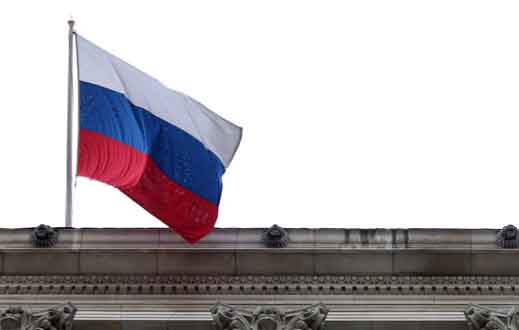3 best commodities to watch as Russia-Ukraine war intensifies
As the Ukraine crisis escalates, Russia has approved 200 export bans in retaliation to Western sanctions. Nickel, palladium, and uranium could be next as these metals cannot easily be replaced by alternatives.
 Source: Bloomberg
Source: Bloomberg
As the Russia-Ukraine crisis escalates, western sanctions have created ‘a completely new kind of crisis.’
Some Russian institutions have been banned from Swift. The US, UK, and Australia have committed to an oil bar against the aggressor state, and others are strategizing how to wean themselves off Russian oil dependency. Meanwhile, Western corporations are abandoning the former Soviet state.
In retaliation, Russian Deputy PM Alexander Novak has threatened to ‘impose an embargo on gas pumping through the Nord Stream 1 gas pipeline,’ warning that rejecting Russian oil could send Brent Crude to $300 a barrel.
However, the United States does not import Russian gas, while only 8% of imported oil used in the US is from Russia. While the ban will hit the US economy, it’s unlikely to be an economic disaster.
But Goldman Sachs' Jan Hatzius is predicting a 35% chance of a recession in the US over the next year, saying ‘rising commodity prices will likely result in a drag on consumer spending,’ with ‘a clear decline in consumer confidence since Russia invaded.’ Moreover, World Bank President David Malpass has called the war a ‘catastrophe’ for the global economy.
And to truly hurt the US economy, Russia could soon bar the export of Nickel, Palladium, and Uranium, which cannot easily be replaced by non-Russian alternatives. This makes them some of the best commodities to watch.
 Source: Bloomberg
Source: Bloomberg
Nickel
Key to stainless steel and electric vehicle batteries, Russia accounts for 11% of Nickel ore and 20% of pure nickel production. Moreover, the country’s Nornickel is the largest supplier of battery-grade nickel in the world.
Last week, the London Metal Exchange (LME) was forced to halt trading in the metal after it soared to over $100,000/tonne, up from around $20,000/tonne at the start of the year. With the Shanghai Futures Exchange also pausing trading on the metal, its current $48,226/tonne price will almost certainly remain volatile when trading reopens.
The LME halted nickel trading ‘on orderly market grounds,’ saying only that it ‘will actively plan for the reopening of the nickel market and will announce the mechanics of this to the market as soon as possible.’
ANZ Research analysts believe ‘Russia's dominant position in markets raises the stakes of any supply disruptions, and relatively low inventories held across market compounds,’ while Nomura analyst Yuji Matsumoto thinks that ‘as nickel supply from Russia is currently unstable, and inventories are low, we see the possibility that additional supply shocks could cause prices to rise further in the short-term.’
Palladium
Palladium has soared over the first quarter of 2022, rising from $1,617/oz on 15 December to $2,809/oz today. The metal is essential to car catalytic converters and semiconductors. Russia produced 40% of palladium globally in 2021, representing some 2.6 million troy ounces. Nornickel is also the largest palladium miner in the world, as palladium is a by-product of nickel production.
TD Securities’ Bart Melek believes that ‘if we see a set of sanctions that reduce financing and free flow of the material to the rest of the world, we could see a…pretty significant rally’ for the metal. Goldman Sachs also expects ‘the price of consumed commodities that Russia is a key producer of to rally.’
With the metal close to the record $2,967/oz it struck in May last year, any further sanctions by or on Russian mining could see new highs soon.
Uranium
The Uranium spot price is up to $59.75/pound, according to UxC LLC data, its highest since the 2011 Fukushima disaster. With Russia’s state-owned Rosatom accounting for 35% of global uranium enrichment, and Russia itself accounting for 16.5% of uranium imported into the US in 2020, any sanctions could see uranium soar.
Uranium is an essential component for nuclear power generation, and the rising price of Brent Crude coupled with the Russian oil embargo is seeing resurgent interest in the renewable energy.
Already meeting 10% of global energy needs, China is planning on building 150 new nuclear reactors over the next 15 years. In France, nuclear already makes up 70% of all energy needs. Germany is reconsidering its plan to close its nuclear plants, while Rolls-Royce in the UK is developing mini-nuclear reactors that could be the long-term answer to the UK’s energy needs.
UxC President Jonathan Hinze believes that while ‘the prospects for future limits on Russian enriched uranium imports in the West remain high, it appears that this upward pressure on spot uranium prices is unlikely to let up.’
And while Canadian and Australian producers could up output in the long-term, a short-term supply shortage, and therefore price increase remains a distinct possibility.
Trade over 35 commodities with continuous pricing, low spreads and fast execution with us, the UK’s No.1 trading provider.* Learn more about commodity trading with us or begin trading commodities now.
* Based on revenue excluding FX (published financial statements, June 2020).







0 Comments
Recommended Comments
There are no comments to display.
Create an account or sign in to comment
You need to be a member in order to leave a comment
Create an account
Sign up for a new account in our community. It's easy!
Register a new accountSign in
Already have an account? Sign in here.
Sign In Now